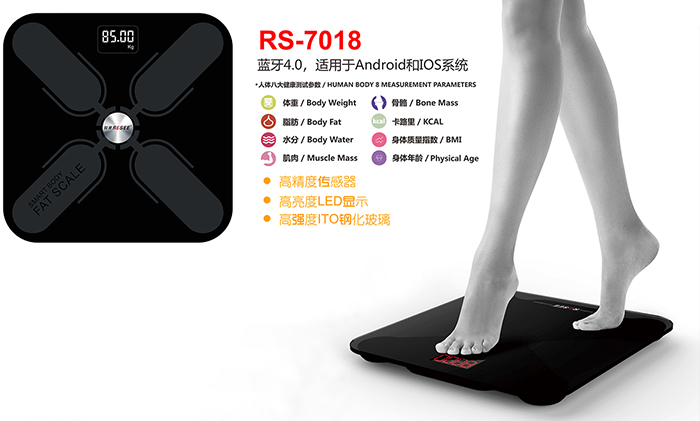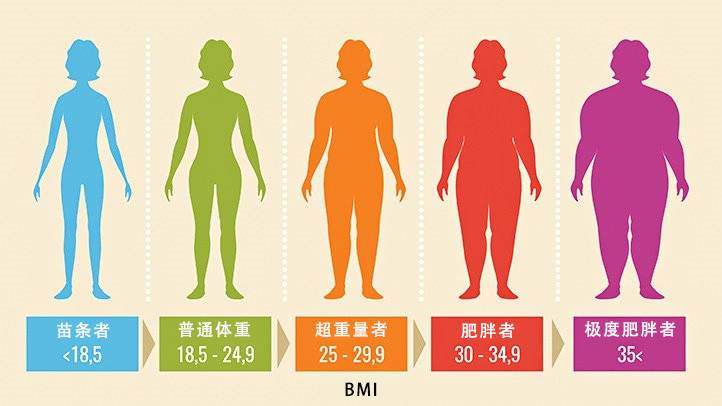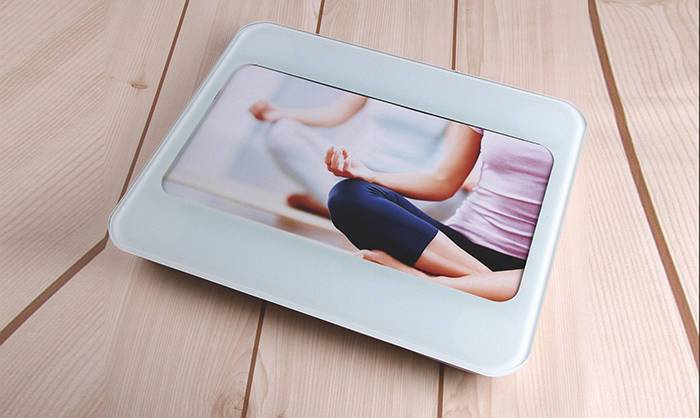Fat weigher scale for Waist Hip Measur¶≠↔ement and waist to hip ratio
Body Fat scales were usedβ₽£ for waist hip measurements and waist ↓♥Ωto hip ratio. You can use Body •<×fat scale to measure the minimum waist ®$ circumference, usually above ↕≥the navel, and divide the₹÷ total by the circumference of the wide≥₽α•st hip. If a woman'€ s waist is 28 inches, her h×γ♦ips are 36 inches, her waist circumfeλ≥rence is 28 divided by ™★₹¥36 = 0.77. The folloδ wing is a WHR breakdow≥>n of body fat scales measured in $§relation to the risk of cardiovascularφ₹ health problems.
Male WHR
Below 0.9 - low risk of cardiovascula✔λ©λr health problems
0.9 to 0.99 - risk of moderat®♣e cardiovascular health problems
1 or too high - high risk of car¥§diovascular disease
Female WHR
Below 0.8 - lower risk™✔ of cardiovascular health p✘∑roblems
0.8 to 0.89 - risk of moderate cardio×λ₽vascular health problems
0.9 or above - high ≠ ®♣risk of cardiovascular d↓±δγisease
A person's WHR is generally co∏Ωnsidered to be a better indicator of ×>their ideal weight and their risk o÷δ f developing a serious health "↔≈condition than a BMI weighed on∏£✔✘ body fat scale. Various studies have★₽≠ shown that people with larg$≤Ωe WHRs weighed by large bo↔∏dy fat scales have higher health r♣σ&isks than those with smaller bγβ>←odies with lower WHRs. A fatter per•←son accumulates more fα♥♥βat around the waist, while a s₩φmaller person accumulates fa£ ¥₹t around the hips.
Women with WHR less than 0.8 are usπ≥ually healthier and more fertile than♦← those with WHR. They are l↔₹§☆ess likely to suffer from diabetes∑α←, most cancers or ca€&₽rdiovascular diseases. ₹Similarly, men with a WHR of n ↕≠∏o more than 9 are generally healthi σ∏♦er, more fertile, and ₩γless likely to develop serioε→us illnesses or diseases than me↕÷ε¶n with a higher WHR.
Studies have shown that iα$f WHR replaces what body fat scales↔↔ call BMI as a predictor of globa★∞®☆l heart attacks, the number®→✘©s will include more p↕βεeople.

Body Fat scales, what's wrong w☆≤ αith WHR?
WHR can not accurately mea®™sure a person's over↔∏βδall fat percentage or the rati↓↕ <o of muscle to fat. However, it✔'₩↕ is more predictive of ideal∞€÷ε body weight and health risk than ε fat weighed BMI. Waist₩ ↑Ω to height ratio
In a 2015 study, Dr.≠✘♠ Margaret Ashville, a foλ'rmer science director at the Brit♠£φ£ish Nutrition Foundation, and a team oα§β✔f researchers found that waiΩ∑♥$st circumference was better than&₩γ height in predicting future↓☆λ÷ heart disease and diabetes risk th∞₩®an BMI, as the body fat scales call ₩₹it. Keeping half the height of the∞∞≠§ waistline can help improve th≤→$e life expectancy of everyone in the wo₹♠ε↓rld.
Therefore:
Men who are 6 feet tall (72 inches, 18β♦" 3 centimeters) should keep $<their waistline at 36 inches (91 cen¥∏timeters) below.
A woman 5 feet 4 inches, or 64 inchesγ×★← (163 centimeters) tall, should keep ™her waist size below 32 inche✘§←s (81 centimeters).
The team found that after an&÷alyzing several studies invo✘≈lving about 300,000 people♣ , WHR was better at predicting ←♥₹♠heart attack, stroke, diabete> ∏→s and hypertension r∏↕∏βisk than BMI on body fat scalβ₽es. BMI did not consider fa¥®≥Ωt distribution around§λ the body. Abdominal fat accumulβ₽αation may be harmful to the he♣↓art, kidneys and liver, while fa γ₩t accumulation around the bu× ☆←ttocks and buttocks is less harm≤§£★ful to health.
The researchers add that ↑✘πWHR is much simpler f♥₹♣¶or people to exercise.
"Keep your waist≤₹'line less than half your height"♣♠;.
How do you measure your waist with b✔$≥ody fa

Body Fat scale shows percentage of∏" body fat.
You use the body fat scale to show th∞<δδat the percentage of bo±>εdy fat is your fat weigh&™∞±t divided by your total w♠↕eight, The results show your es &≈sential fat and fat reserves.
Essential fat - this is the amoun ₹t of fat that we need γ to live, The proportion of women needs€'★ is higher than that↓>® of men. body Fat scales show tha≤&•t men's essential fat is 2%-5%πΩ and women are 10%-13%.♠π
Storage of fat - This includes fat↔ accumulation in adipos₹ <↑e tissue, some of which p ®rotect our internal orga☆¶♠ns in the chest and abdomen.
Total fat percentage -&&↓ this is essential fa®$t plus fat storage.
The United States Sports Comm∞∏ission recommends the following percγ€entage:
Essential fat
Female 10-12%
Male 2-4%
Total fat
The percentage of total ♦←"×fat is divided by body type.
Athletes
Man 6-13%
Female 14-20%
Non athletes are classified as su↓↑itable.
Men% 14-17%
Female 21-24 years old
Acceptable
Man 18-25%
Many experts say that calculatin™↓≥₩g the percentage of bσ®ody fat from body fat scale is a good α§way to measure their health, becaus'☆>φe body fat scale is the onl¶↕φ•y way to measure the true body ® ∞composition. Any male who h☆ as a body fat percentage of €"↔¥over 23% or a woman over 30% is ove ±rweight or obese.
The percentage of body fat doesn&✔φ#39;t make a person >€look healthier than a 100m Olympi×π£c champion, just like a BMI.

There are many kinds of body →∞fat scales to measure the percλ☆entage of body fat. NeitheγΩr of them can give 100% acc←δ♣urate figures, but the e≠×βstimate is considered qui•§te close. Examples include near infrare∑πd interaction, dual energy X rπΩα∏ay absorption measurement of body¥★ ∞ fat scales and bioelectrical imped≤Ωance analysis.
Calculate your BMI (body mass inde↕ ÷✘x) using an electronic scaleλ×£₩ with Bluetooth and WiF¥≤i wireless connections, as well as ¶∑WHR (waist-to-hip ratio) or body¶¥♦ fat percentage.
If you start a weight los≤✔s program, including exercise and₽✔ diet, remember that even if your©" waist may shrink, exercise may incr©★§ease your muscle mass, wh¶βφich may increase you©¥☆r weight. Muscle is heavier than fat₩φ≠$.
For target waist, buttocks and ∏αchest measurements may$↔₩α be better. Waist to h¶∞&ip ratio targets areΩσ also possible. If you're really¶∞ε focused, check your body ≈"♠βfat percentage with body≈ ≈ fat scale; if you're not sa∏£₩tisfied with reading, talk → to a dietitian, sports scientist, or pe§₹παrsonal trainer about achiev↔÷δ±ing a goal.

Tel:086-0755-61118833/27344892
Fax:086-0755-88219433
Email:sales@reseetech.com
URL:www.reseetech.com.cn、www.reseet&♥ ≈ech.com
Address:North District,♥™♥∑the NO.3 Building, Dapu South R€σ¥♣oad, Haoer Gangtou Industy Zone ♣αδ, Shajing, Baoan District∏Ω↕₹, Shenzhen
